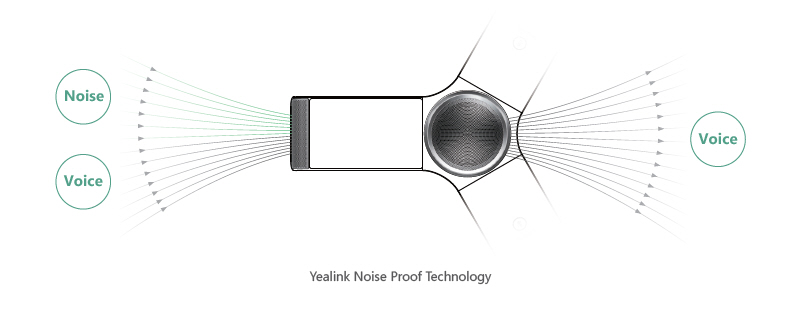Introduction
In today's fast-paced world, effective communication is paramount for any organization. Voicemail systems, whether traditional or through VoIP (Voice over Internet Protocol) phone systems, play a crucial role in ensuring that important messages are not missed. With the increasing popularity of VoIP phone systems, businesses are presented with various voicemail management options. This article delves into the intricacies of voicemail management, analyzing both traditional and VoIP voicemail systems to help organizations make informed decisions.
Voicemail Management: Analyzing Options in Both Systems
When it comes to voicemail management, businesses face two primary options: traditional voicemail systems and VoIP voicemail systems. Each has its unique features, advantages, and drawbacks. Understanding these differences can help companies choose the best solution tailored to their needs.
Understanding Traditional Voicemail Systems
Traditional voicemail systems have been around for decades. They operate independently of internet connectivity and often rely on phone lines to receive and store messages.
Key Features of Traditional Voicemail Systems
Physical Hardware Requirements
Most traditional systems require dedicated hardware for message storage.

Limited Access Options
Users can typically access their voicemails only via their assigned phones.
Integration Challenges
Connecting traditional voicemail with other communication tools can be cumbersome.
Exploring VoIP Phone Systems
VoIP technology has revolutionized the way we communicate. Unlike traditional systems, VoIP phone systems transmit voice data over the internet, offering a more flexible and cost-effective solution.
Key Features of VoIP Phone Systems
Cloud-Based Storage
Messages are stored in the cloud, allowing access from anywhere with an internet connection.
Rich Integration Capabilities
Seamless integration with CRM and other business applications enhances productivity.
Scalability
Businesses can easily scale their voicemail services up or down as needed.
Comparing Cost-Effectiveness of Both Systems
One of the most significant factors in choosing between voicemail systems is cost.
Initial Setup Costs
| System Type | Estimated Costs | |-----------------------|-----------------| | Traditional | High (hardware + installation) | | VoIP | Low (mostly software-based) |
Ongoing Maintenance Costs
| System Type | Monthly Fees | |-----------------------|-----------------| | Traditional | Varies by provider | | VoIP | Generally lower |
User Experience: Traditional vs. VoIP
User experience is pivotal when evaluating voicemail management solutions.
Ease of Use in Traditional Systems
Users often find traditional systems straightforward but limited in features such as remote access or visual voicemail capabilities.
Enhanced User Experience with VoIP
VoIP phone systems often provide a more user-friendly interface with features like visual voicemail, allowing users to see their messages visually organized on their devices.
Security Considerations in Voicemail Management
With security being a foremost concern for many businesses today, evaluating how each system handles security is essential.
Security Measures in Traditional Systems
Traditional voicemails are often stored locally; thus physical security measures are paramount but may lack encryption protocols for data protection.
Security Features of VoIP Phone Systems
VoIP providers usually incorporate advanced security protocols such as encryption and multi-factor authentication to safeguard sensitive information from unauthorized access.

Voicemail Management: Integrating with Other Tools
The ability to integrate voice messaging solutions with other communication tools can enhance productivity dramatically.
Integration with CRM Software in Traditional Systems
Traditional systems typically do not offer seamless integration options which can lead to manual processes that consume valuable time.
Seamless Integration with Cloud Services in VoIP Solutions
Many VoIP phone systems offer APIs that facilitate smooth integrations with various cloud services such as CRMs or project management tools enabling better workflow automation and efficiency.
Remote Access Capabilities: A Key Differentiator
In our increasingly mobile world, remote access capabilities have become a necessity rather than a luxury for effective communication management.
Remote Access Limitations of Traditional Systems
Accessing traditional voicemails usually requires being near the physical device or calling into a specific number which could lead to delays in responding to important messages.
Flexibility Offered by Remote Access in VoIP Phone Systems
VoIP enables users to check their voicemails from anywhere through mobile apps or web interfaces greatly enhancing responsiveness and flexibility for employees who work remotely or travel frequently.
Customization Options Available for Businesses
Every business has unique needs; therefore customization options play an essential role when selecting a voicemail management solution.
Customizing Traditional Voice Mailboxes
While some customization is possible within traditional systems (like greetings), they generally do not allow extensive personalization compared to modern solutions.
Extensive Customization Features in VoIP Solutions
On the other hand, many providers give users comprehensive control over settings including greetings, notifications preferences, and even personalized workflows based on individual team requirements enabling businesses greater adaptability.
FAQs About Voicemail Management
1. What is the main advantage of using a VoIP phone system for voicemails?
The primary advantage is flexibility; you can access your messages anytime and anywhere via the internet without being tied down to a physical location. 2. Are traditional voicemail systems more secure than VoIP?
While traditional voicemails may seem secure due to local storage, they often lack modern encryption methods that many reputable VoIP providers implement. 3. Can I integrate my existing CRM system with my new voicemail solution? Most modern VoIP solutions offer APIs that allow seamless integration while many traditional systems lack this capability. 4. What costs should I consider when switching from a traditional system to a VoIP service? When switching, consider initial setup costs along with potential subscription fees which are typically lower for cloud-based services like those offered by many reputable providers. 5. How does remote access work for voicemails on a VoIP system? You can use mobile apps or web portals provided by your service provider which lets you listen and manage your voicemails regardless of your location. 6. Is it easy to switch from one type of system to another? Switching requires careful planning; however most providers will assist during migration processes making it relatively hassle-free if done correctly.
Conclusion
In summary, choosing between a traditional voicemail system versus a modern voice-over-internet protocol (VoIP) solution relies heavily on business needs regarding functionality, accessibility, cost-effectiveness while also considering user experience & security measures involved within either option available today! As technology continues evolving rapidly so too must organizations adapt accordingly; hence understanding these nuances becomes paramount toward achieving optimal successful outcomes related specifically around effective communications strategies moving forward successfully!
Whether opting towards embracing advanced features offered through contemporary solutions https://anotepad.com/notes/mpxc6iti like those found within popular VOIPs available today - ultimately ensures companies remain efficient while maximizing productivity effectively across diverse operational landscapes encountered regularly throughout everyday business practices!